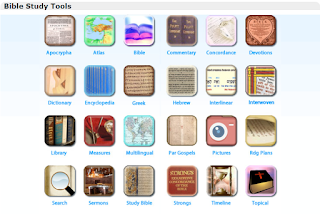Greetings dear Brothers and Sisters in Christ!
The Great book is greatly Misunderstood.The Greatest Problem of Today’s Church is a misinterpretation of the Bible and The greatest need is the proper interpretation of the Bible.So, in this article you will know how to study bible in various methods.
What is a Bible Study?
Studying the text systematically to determine the God-intended meaning and to apply it to our lives is called Personal Bible Study.
Why Bible Study?
For our Spiritual growth 1Pet2:2 If you want to know God, you must know his word, If you wish to perceive His power, you must know His Word, If you want to do His will you must know His Word To guard ourselves and protect others from wrong teachings (Every wrong teaching has textbase) We are commanded to study (1Tim2:15).
Methods of Bible Study
1. Deductive Bible Study
a move from general to particular.
“Deductive” method of reading the Bible contains picking a particular topic and then going through the Bible and finding passages that support the topic. This is related to the “topical approach” to Bible study.
Ex.The doctrinal study, Topical study, Character study.
2. Inductive Bible Study
A move from particular to the general.
The inductive method is an investigative way of studying Scripture that can be used by both new and seasoned students alike. It’s a powerful tool for those who want to learn how to study Scripture well.
When applied properly, the inductive method will provide a better overall understanding of passage—what it says, what it meant to its original audience, and what it means today.

Steps in Inductive Bible Study
1.Observation: What does the passage say?
Opening your eyes
2.Interpretation: What does the passage mean?
Opening your Mind
3.Application: What should I do?
Opening your heart
1. OBSERVATION :
The more you observe the more you can understand
Every word in the bible is God intended Read the bible Repeatedly,
Thoughtfully, Patiently, Prayerfully & Purposefully Read the bible Repeatedly, Thoughtfully, Patiently, Prayerfully & Purposefully.
It is the work of detective Jesus asked 11 times “ Have you not read”?
Note: The goal of Bible study is not observation but interpretation & Application. But observation is compulsory for effective interpretation & application.
What to Observe :
1. Literary Form/Genre :
Once upon a time, there lived a man – Fiction
In 1947 India got independence – History
A watched pot never boils – proverb
Interpretation changes according to literary form.
Literary forms of the Bible
History/Narrative: Genesis to Esther, Gospels, Acts- Events
Poetry: Job to Song of Solomon – Feelings
Prophecy: Isaiah to Malachi – Future
Teaching: Romans to 3John- Ideas Apocalyptical; Revelation – Future
2. Imagination :
Through our imagination, we are able to watch the story in our minds.
Jesus’ intention in telling the parables is to engage them in their imagination as a way to access to their hearts.
Entering the text increases the quality of our observation and can lead to a greater depth of understanding.
We have to imagine :
What can I see?
What can I hear?
What can I smell?
What can I taste?
What can I Touch?
What can I feel?
Be as a reporter, Eye witness account, Director, an actor, a photographer, and a recipient.
3.The People of the passage :
The stories of the bible are the stories of the people. It is written for the people and written by the people.
Identify every person in the bible. write how they are described in the passage.
Note their actions, characters, words, response, and descriptions.
4.Time words of the Passage:
. Identify every word related to time. Observe everything that happens each time.
Words like Immediately, after, before, then, when, next day, evening.
Eg: Mark 1:18
5.The places and things of the passage:
Note the places mentioned in the passage.
Write all details you get about the place from the passage.
These Words help in identifying Geographical Context
Eg: John 5:4,9, Luke 4:12.
6.Activities of the passage:
It is a very important activity Identify every action word (Verbs) in the passage.
Note its Subject (Who is doing the action?) It’s Object (Who is the receiver?) Its Tense(When is it done i.e Present, Past, Future), Its Result. Also identify is it a command?
7.Repeated & Unknown words:
Identify the words that are saying repeatedly in the Passage. They are important words. Those are in the mind of the author. Eg: John 15:1-10, Also identify the unknown words. The words for which you don’t know the meaning. Eg: Mathew 8:4.
8.Identifying Little Words in the passage:
Identifying little words is harder. These include “connecting words”, “Contrast words”, “Condition words”, These words are so significant in the passage. They connect the verses, passages, chapters. Emphasizes the argument. Create Interest. Identify What they are doing in the passage. What role do they have? What would be lost if they were missing? Matthew 7:24-27.
9.Figurative words in the Passage:
The Bible is full of figures of speech. They express the truth in different ways. Jesus used 56 metaphors in one sermon.
Importance of Figures of Speech:
- They say a lot in little. Eg: The Lord is my shepherd.
- They emphasize a point. Eg: Underneath are the everlasting arms.
- They can easily be remembered.
- Abstract idea & made simple. Eg: You are the light of the world
10.The atmosphere of the passage :
The atmosphere is the underlying tone or spirit of the passage. Some of the moods by which a portion may be characterized are those of despair, thanksgiving, awe, urgency, anger, humility, joy. The atmosphere means the underlying tone or spirit of the passage. Some of the moods by which a portion may be characterized are those of despair, thanksgiving, awe, urgency, anger, humility, joy. Eg: Philip- Joy, Peter-Encourage.
2. INTERPRETATION :
Determine the meaning of the observed facts to see what the author wants his, then readers to understand.
The Bible has dual authorship. The holy spirit in sync with the human author. It has a dual readership. The original audience to whom the scripture is first addressed and the later audience i.e the subsequent believers. Therefore it is written for us and not to us.
This calls for proper interpretation and application. Biblical interpretation is demanded by the tension that exists between its eternal relevance and the historical, geographical, cultural, linguistic, & theological particularity in which the bible is given.
One Meaning: Is there a possibility of having the right meaning & Wrong Meaning of text.?! Every text has only one Meaning which is God Intended Meaning But has many applications If we allow many meanings to the one text, everything may become right. Think Paul is listening to your explanation.
Problems of Interpretation:
- Time Gap ( Chronological)
- Space Gap(Geographical)
- Custom Gap(Cultural)
- Language Gap(Linguistics)
- Spiritual Gap
- Social Gap
- Religious Gap
BIBLE STUDY TOOLS:
- Native Language Bible
- English Bible( Two to three translations)
- Dictionary
- Bible Dictionary/Encyclopedia
- Bible Atlas
- Study Bible Commentaries
- Bible Concordance
Bible Hub is a very good tool and source for various languages like Aramaic, Hebrew and various versions like NIV,KJV,ESV,etc.., Commentaries, concordance, and many tools available in this tool. Bible Study Tools could be very helpful to do a detailed bible study.
Fig: biblehub.com
Aim of Interpretation:
Author Intention: The author of each book of the Bible determines the meaning. The author has only one meaning in his mind. We have to find what the author was trying to communicate to his original readers rather than what it sounds like to us. Original Reader Understanding Plain Meaning of text not for uniqueness.
Interruptions for Interpreter:
Preoccupied understanding Keeping the preacher above the word 3 Extremes that I can not, I know everything, It is not my work.
Laziness ( Jer 23:30)
Rule #1: Interpret Literally
Understand the Bible as you understand other books. Don’t consider everything as figurative. Take the passage always in its literal sense unless there is a good reason.
Eg: The story of donkey Luke 19:28
Figurative or Literal: Take the figurative sense if the literal would involve an impossibility. Eg: Light of the World Take the figurative sense if the literal would demand immoral action. Eg: God is my shepherd Take the figurative sense if the literal meaning is an absurdity. Take the figurative sense if an explanatory literal statement followed.
Rule #2:Know the Meaning of Words
The meaning of the word may change over the period. Eg: Conversation is equal to conduct in the olden days, talk in modern. Find the meaning of unknown words Tools: Read more translations and identify the usage of different words, Use Dictionary, Look for Root words.
Rule #3:Interpret in Literary Context
“A Text without Context is a pretext to proof text”. The meaning of the word is in its sentence, the meaning of the sentence is in its passage, The meaning of the passage is in its Chapter and for a chapter in its book. Hence we have to understand what comes immediately before the passage and how does it relate? What comes after the passage and how does it relate? Where does this passage fit within this book of the Bible? Where do this passage and the book fit in the Bible as a whole?
Promises of the new year, bald is clean Lev 13:40,
Rule #4:Interpret in HIstory Context
We are reading the incidents bible which happened more than 2000yrs back. The events took place in a certain culture. The cities were small & Compact and had towers, walls, and gates for protection. Water didn’t come from the tap but fetched from wells. Their clothing was different. Their homes were different. The Bible is the word of God,
It has eternal relevance; It speaks to all humankind, in every age, and in every culture.
How to understand Historical Context:
Eg: Jesus washing the feet of disciples((Jn13:1-17), Football meaning in America, Like a stream of Negev Psalm 126,
a foreigner came to Hyderabad to live. You have to travel in the time machine to the time of text and understand the following background of the author, audience, situation & people in the text. Cultural Background, Religious Background, Political Background, Geographical context.
Tools: Read the whole Bible, Use Atlas, Background study bible, Commentary.
Author: Who is he? What is his intention in writing? When it was written, What is His cultural, religious, social, geographical background at that time? His background affects him.
Recipient: What is their problem? How did they understand? What are the cultural, religious, social, geographical background at that time Situation: What is happening?
People of the Passage: People’s Historical background.
Rule #5 Interpret in View other Scripture:
The Bible interprets the Bible. Check your understanding of the verse against the rest of the Bible. We need to consider the full counsel of scripture. The ultimate context of any text is the Bible. If your interpretation of the specific text contradicts the entire bible, you have to put a break and recheck.
The bible does not contradict itself. Because The author is the Holy Spirit. Eg: 1Peter 3:20
Tools: Bible,Cross-Reference Bible, Concordance, Similar passages/ teachings,Commentaries.
Rule #6 Interpret in view of Grammar:
The relationship among words, phrases, sentences The relationship provides the meaning. The relationship between words, phrases, sentences. The relationship provides the meaning. Identify the parts of speech: noun, pronoun, verb, adjective, adverb, Preposition conjunction, and look for how these words relate to one another. Identify Tense and Gender.
Parable: It is a simple story used to illustrate moral or spiritual lessons as told by Jesus in the Gospels. It teaches one key truth, It makes one main point All of the details of the parable usually of great significance. Eg: He runs like a horse.
Proverb: A proverb is a wise saying or comparison, containing wisdom about skillful living. Teaches principles, not promises. Many times they illustrate the law of sowing & reaping and cause and effect.
Be Watchful :
God helps us in our interpretation Ps 119:18, Luke 10:21, 1Cor 2:10 We must do our Part 2Tim2:15, Pro 2:2-4 Our human nature can misinterpret Our Sinful nature can Misinterpret (2Tim4:3) Devil can Deceive into misinterpretation 1 Tim 4:1.
3.APPLICATION :
“ The scripture was not given to increase our knowledge but to change our minds” by DL Moody You have not yet understood, If you have not yet lived out.
The study is not for knowledge but to obey it Interpretation without application is like buying a medicine & not having it. Some people become experts in the scripture, yet their lives are unchanged. If Your study is for knowledge sake, In the end, it may fill our head but make our hearts empty. We must allow our biblical knowledge to transform us.
James 1:22-25
We use mirrors to make some improvements in our appearance. Eg: brushing our hair, It would be odd even if you found mud on your face & leave it as it is. It is self-deception. We will be blessed if we respond to obey.
Application questions to ask yourself?
Is there a command to obey? Is there a sin to confess? Is there an example to follow? Is there a truth to convince? Is there a promise to claim? Is there a Character of God to Praise? What does God want me to do through this passage?
God: What is God’s Character & His purposes? How does the view of God change in light of what I learned here? How would my relationship change if I believed what the passage says about Himself: Which of the characters do I identify? Does that character an example to follow or avoid? How does this passage challenge me to repent, trust and respond Another way of
Relationships: What problem between people is addressed in the passage? In which of my relationships is that problem present? How does this passage call me to treat people differently? Mission: Purposes of God about the world. How does it invite me to participate in what God is doing?
The revelation of God leads to worship, warning of God leads to repentance, Promise of God leads to faith, Truth of God leads to witness, Commands of God demands obedience.
Watch video on how to study the bible.
Check out this Bible History Facts for complete information about Bible.
William McPherson who reads the Bible with his tongue.
God Bless You




.jpeg)

.jpeg)




0 Comments